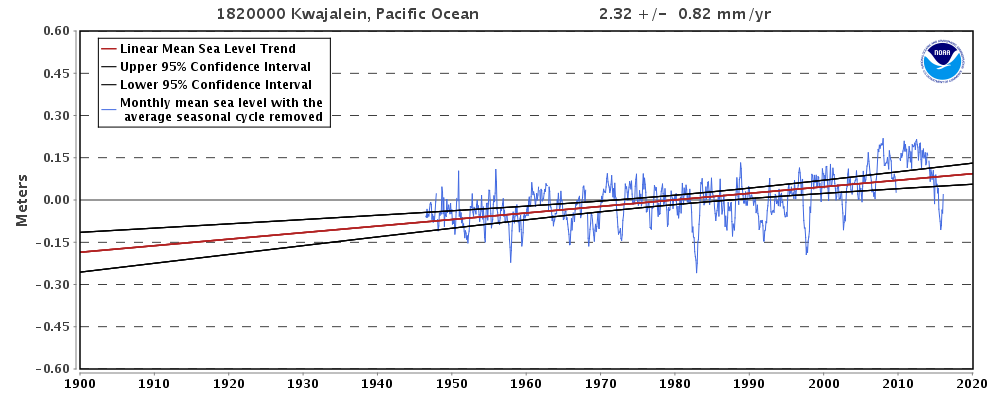Ooops! Alarm over ‘sinking Islands’ premature as sea level falls at Kwajalein Atoll
Remember this little article by Nils-Axel Mörner, not quite three years ago?
He discussed Kwajalein Atoll, in the Marshall Islands, where there’s a tide gauge that seemed to be measuring accelerated sea-level rise:

Of course, the Climate Community sounded the alarm. “Sinking islands call for NZ action,” trumped the New Zealand Herald. “Low-lying islands face existential threat from rising sea levels,” declared the Bangladesh Daily Star.
But Nils warned against drawing panicked conclusions from just one tide gauge. He pointed out that the apparent surge in sea-level at Kwajalein was atypical, and thus unlikely to herald an acceleration in global sea-level rise. He speculated that it could be due to local factors, such as subsidence caused by local construction projects. “In conclusion, don’t “hang your hat” on the Kwajalein graph,” he wrote.
Willis Eschenbach then chimed in, and pointed out that the the apparent trend was simply too short to draw any conclusion from it. Indeed, the literature indicates that at least 50-60 years of data are necessary to deduce a robust sea-level trend from a single tide gauge record.
Of course, Nils and Willis were right. Look at the Kwajalein tide gauge now:

http://tidesandcurrents.noaa.gov/sltrends/sltrends_station.shtml?stnid=1820000
It’s obvious that the apparent acceleration in sea-level at Kwajalein was transient, and did not indicate the beginning of an accelerating trend in sea-level rise.
To me, it looks like sea-level at Kwajalein is inversely correlated with ENSO. When the current El Niño ends, so will the current dip in sea-level at Kwajalein, probably.
Over the long term, the sea-level trend at Kwajalein will prove to be approximately linear, just like it is at every other high-quality, long term coastal tide gauge in the world. Seven decades of heavy GHG emissions have caused no increase at all in the rate of coastal sea-level rise.
It seems it tracks nicely with ENSO:
(updated: Here’s a tighter. tidier version of the juxtaposed Kwajalein and ENSO grapha)


No comments:
Post a Comment